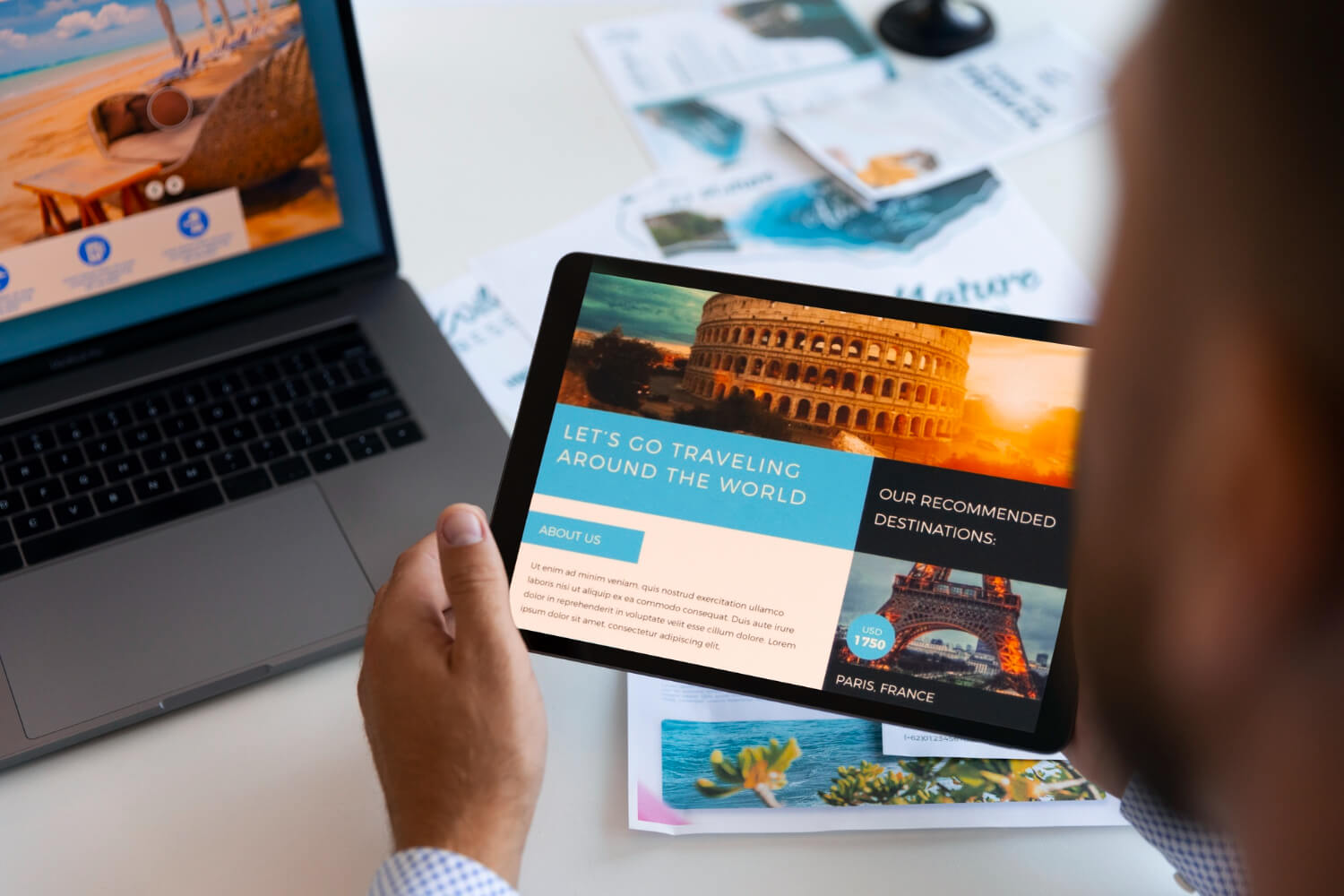“Frustrating!”
Have you ever landed on a website looking for something specific – a product page, a contact form, their blog – and felt like you were lost in a maze? Endless menus, confusing labels, or a complete lack of clear direction. That’s the feeling of bad website navigation.
The problem is, that it’s not just frustrating for human visitors; it also confuses search engines. If Google’s bots can’t easily understand the structure and hierarchy of your site, it’s less likely to rank your pages well. That means missed opportunities to attract organic traffic and qualified leads.
The good news? Clear, intuitive navigation isn’t some mysterious art. It’s a foundational principle of user-friendly web design and is critical to your overall SEO success (technical SEO, local SEO, and other SEO effort). Let’s dive into the best practices and strategies that make both search engines and your target customers happy.
How Search Engines Assess Your Navigation

Think of your website navigation as a roadmap for search engine crawlers (also known as bots or spiders). These automated programs analyse your website to understand its content, structure, and how pages relate to each other. Here’s how your navigation guides this process;
- Crawlability: Just like humans need clear pathways, search engines need to be able to follow links and access all important areas of your site. Here are some elements that impact crawl ability;
- Sitemap.xml: This file gives search engines a direct list of your pages, essential if your navigation isn’t purely HTML-based.
- Clean Code: If your menu is built with messy or outdated code, crawlers may stumble, resulting in pages not getting indexed.
- JavaScript Menus: While they can look cool, ensure that dropdown elements generated by JavaScript are still indexable
- Anchor Text: The words you use for your menu links matter! Avoid generic terms like “Click Here” or “More”. Instead, utilize descriptive phrases that signal the content of the linked page (e.g., “Digital Marketing Services”, “Our Blog” ). This provides search engines with valuable keyword clues about your content.
- Internal Linking: Navigation isn’t just the main menu. How you connect related content through in-text links shows Google the hierarchy and themes of your site. If you consistently link from blog posts to specific service pages, it reinforces you’re an authority on that service.
Website Navigation Best Practices
Now that you understand how search engines interact with your navigation, let’s explore the principles that will ensure both humans and bots easily understand how to move around on your website.
- Hierarchy Matters: Your most important pages should be easily accessible from anywhere on your site. Prioritise top-level categories in your main navigation, and use submenus or dropdown options to organise more specific content. Also, use title tags and heading tags as may be necessary
- Consistency: Maintain the same menu structure, labelling, and placement across all pages of your website. Consistency makes it easy for users to find their way around and reduces confusion.
- Mobile-First Approach: Design your navigation with smaller screens in mind. This forces simplicity and clarity. Even if the majority of your traffic is currently on desktop, mobile usability is a growing factor for Google’s rankings.
- The 3-Click Rule: The idea that users should be able to access any page on your site within three clicks is a long-held UX debate. While it’s not necessarily accurate, it emphasizes accessibility: Don’t bury key content too deep within a complex menu structure.
Different Structures in Website Navigation

Choosing the right navigation structure depends on the size and complexity of your website. Let’s examine common options:
- Horizontal Top Menu: The classic! Works well for sites with relatively few main categories. Avoid overcrowding it with mega-dropdowns that overwhelm users.
- Vertical Sidebar: Often used for websites with many categories or subcategories (think e-commerce). Can take up valuable screen real estate, so consider collapsible or off-canvas versions.
- Footer Navigation: Ideal for secondary links like “About Us,” “Contact,” or “Privacy Policy.” Should NOT contain core content users expect to find in your top-level navigation.
- Hamburger Menus: A necessity for mobile optimization, but can become problematic on a desktop if they hide too much important information behind a single icon.
- Search Bar: A powerful addition to supplement good web navigation, but never a replacement. Useful for sites with a vast amount of content where users might know specifically what they’re searching for.
Advanced Strategies & Troubleshooting
Even well-intentioned navigation can sometimes miss the mark. Let’s delve into some advanced tactics and how to identify potential problem areas.
- Breadcrumb Navigation: These visual trails (ex: Home > Blog > How to Optimise Website Navigation) are especially useful for complex websites. They provide users with context, show page relationships, and offer an easy way to navigate back to higher levels.
- 404 Page Optimization: The dreaded “Page Not Found” error is frustrating! But a well-designed 404 page transforms it into an opportunity. Instead of just an apology, include these elements:
- A search bar to help users self-rescue
- Links to popular pages on your site
- A bit of humour or on-brand personality to soften the blow
- Data-Driven Navigation: Don’t just rely on intuition! Tools like heatmaps and user analytics reveal what people are actually clicking on, or where they seem to get lost. Do visitors keep clicking on a graphic element that isn’t a link? That might mean turning it into a navigational element!
- User Testing: Sometimes, you need fresh eyes. Ask people outside your organisation, ideally, those who match your target audience, to perform specific tasks on your site. Observe their navigation patterns and pain points for invaluable insights.
Are You Sending the Right Signals?
We specialize in optimizing website navigation to improve user experience and search engine visibility. Contact us for a free website audit and let us uncover the hidden opportunities within your existing site structure!




